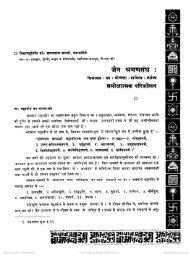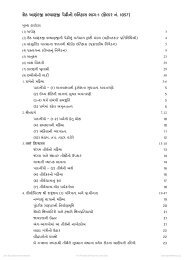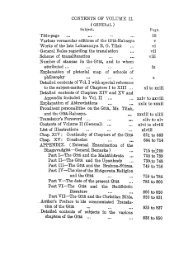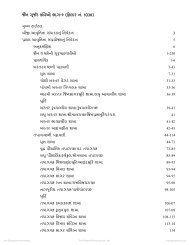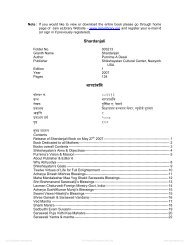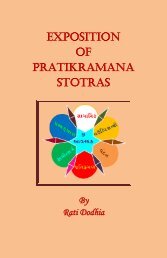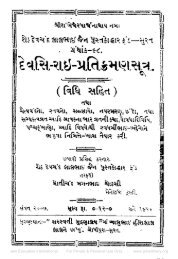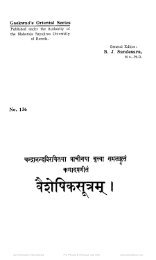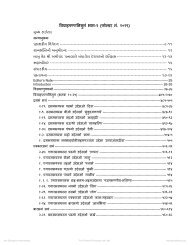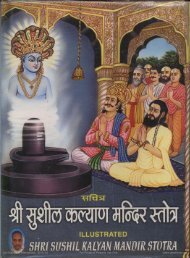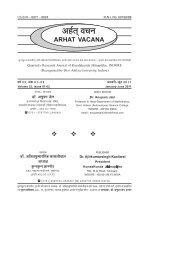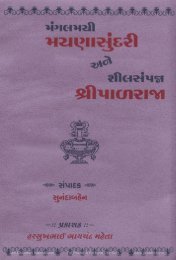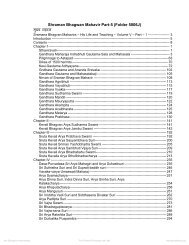Chapter - 08 Bon Po Religion - Jain Library
Chapter - 08 Bon Po Religion - Jain Library
Chapter - 08 Bon Po Religion - Jain Library
You also want an ePaper? Increase the reach of your titles
YUMPU automatically turns print PDFs into web optimized ePapers that Google loves.
Shri Ashtapad Maha Tirth - II<br />
dgu), as classified in the System of the Southern Treasures (Iho gter lugs), is expounded<br />
in as many chapters in the gZi-brjid, the most extensive hagiography ofTonpa Shenrab.<br />
These chapters have been translated by Snellgrove in consultation with Lopon Tenzin<br />
Namdak. See David Snellgrove,The Nine Ways of <strong>Bon</strong>, Oxford University Press, London<br />
1967. Here the Nine Ways are listed as follows:<br />
a. The Way of the Practice of Prediction (phywa gshen theg-pa): Literally theg-pa means<br />
a vehicle or conveyance, rather than a road or a way. gShen, a word of obscure origin<br />
and meaning, can here be translated as "practice" or "practitioner" according to the<br />
Lopon. And the tenn phywa means prediction or prognostication. This way or vehicle<br />
is principally concerned with divination (mo), astrological and geomantic calculations<br />
(rtsis), medical diagnosis (dpyad), and the perfonning of healing rituals (gto).<br />
b. The Way of the Practice of Visible Manifestations (snang gshen theg-pa): This way<br />
is principally concerned with visible manifestations (snang-ba) perceived as positive<br />
manifestations of the activities of the gods (lha) who come to the aid of humanity.<br />
Therefore, the emphasis is placed on invoking the gods (lha gsol-ba) for their aid.<br />
This includes such classes of deities as the Thugs-dkar, the sGra-bla, the Wer-ma,<br />
and so on.<br />
c. The Way of the Practice of Magical <strong>Po</strong>wer ('phrul gshen theg-pa): This way is<br />
principally concerned with magical rituals to ensure prosperity and control over the<br />
spirits evoked, especially the rites of exorcism (sel-ba) to eliminate negative energy<br />
and the negative provocations of evil spirits (gdon) who come to disturb human<br />
existence. The practitioner works with these energies in tenns of evocation, conjuration,<br />
and application (bsnyen sgrub las gsum).<br />
d. The Way of the Practice of Existence (srid gshen theg-pa): Here "existence" (srid-pa)<br />
properly means the processes of death and rebirth. This way is also known as 'Dur<br />
gshen, the practice of ceremonies for exorcising ('dur) the spirits of the dead who are<br />
disturbing the living. It is, therefore, principally concerned with the three hundred<br />
and sixty kinds of rites for accomplishing this, as well as methods for ensuring the<br />
good fortune and the long life of the living. These four represent the Four Causal<br />
Ways of <strong>Bon</strong> (bon rgyu'i theg-pa bzhi). These are followed by the higher ways of<br />
a more spiritual nature, whose goal is liberation and enlightenement, which are<br />
collectively known as the Fruitional Ways ('bras-bu'i thegpa).<br />
e. The Way of the Virtuous Lay Practitioners (dge-bsnyen theg-pa): This way is principally<br />
concerned with morality and ethics, such as the ten virtuous deeds (dge-ba bcu), the<br />
ten Perfections or Paramitas, and so on, as well as pious activities such as erecting<br />
stupas, and so on.<br />
f. The Way of the Ascetic Sages (drang-srong theg-pa): The term drang-srong (Skt.<br />
rishi), meaning a sage, has here the technical significance of a fully ordained monk<br />
who has taken the full complement of vows, corresponding to the Buddhist bhikshu<br />
(dge-slong). The principal concern is with the vows of the monk and the rules of<br />
the monastic discipline ('dulba).<br />
The <strong>Bon</strong> <strong>Po</strong> Traditions of Dzogchen<br />
404



